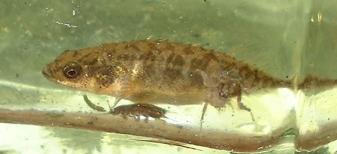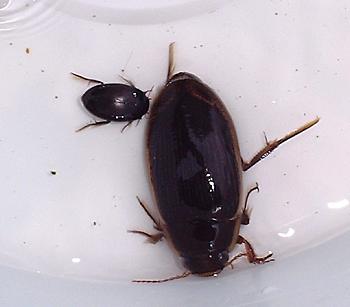Nature
Andy Horton writes:
The stream that ran through Sompting Water Meadows (Lower Cokeham reedbed and ditches, Lancing) produced an interesting selection of freshwater animals. Amongst the reeds (Common Reed, Phragmites australis) and in the areas of heavy vegetation and heavy pigmented water (it looked like weak tea, stained with dissolved organic matter) the small fish called the Ten-spined Stickleback, Pungitius pungitius, was discovered in the dip net, together with some very small beetles. The local name is 10-spined although the book name is usually 9-spined and the large specimens had at least ten spines.

Black diving beetle, Agabus sp.
Lesser Water Boatman, Corixa sp.
A Pond Skater, Gerris sp., quickly skated across the surface film of almost still water.

Black Diving Beetle Agapus sp. and Diving Beetle D. semisulcatus
A few photographs by Ray Hamblett can be found on the following page:
AdurSpring2002.htm
Link to habitat action Plan for Reed beds
UK Biodiversity